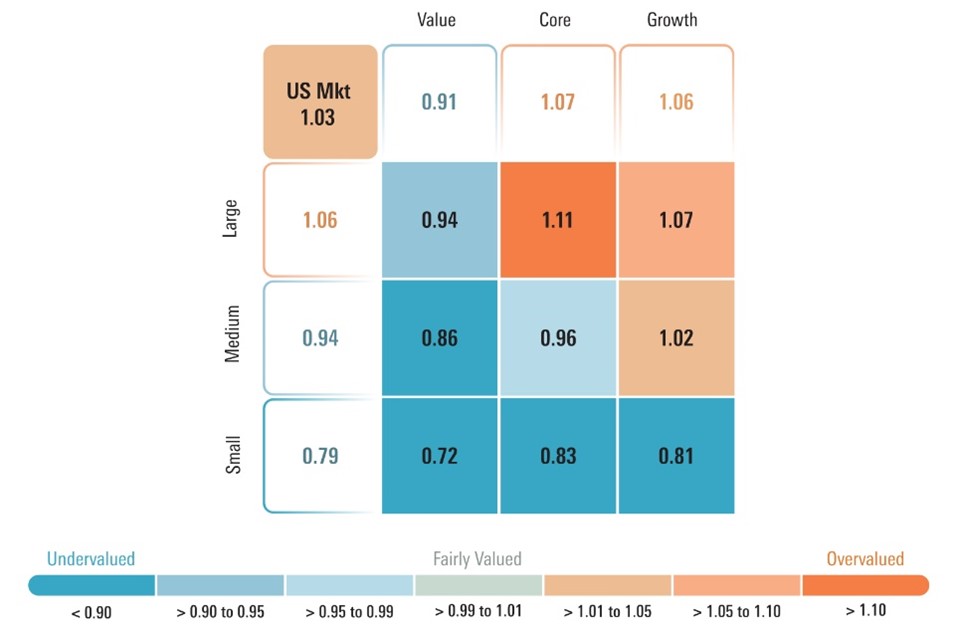AI platforms for trading stocks that forecast and analyze stocks using AI must have compatibility with one another. Platforms that are compatible with existing tools, workflows, and systems can enhance efficiency and productivity. Here are the top ten suggestions for assessing integration and compatibility.
1. Check Brokerage Integration
Platform integration with preferred brokers or trading accounts: Check that the platform works seamlessly with the brokerage you have chosen or account.
Trade Execution: Determine if the platform permits direct trade execution by the integrated broker.
Account synchronization: Determine if the platform can sync account balances, positions, and transaction history in real time.
2. Check the availability of APIs
API access is crucial: Developers can use an API, also known as Application Programming Interface (API) to create their own software and automate processes.
API documentation: Ensure that the documentation for the API includes clear examples and use cases.
Rate Limits: Verify the API's rate limits to confirm they're reasonable and will handle your expected usage.
3. Assessment of Third-Party Tools Integration
Popular tools Check to see if there are any integrations between the platform and tools like Google Sheets, Excel, or trading robots.
Data import/export: Make sure your platform supports easy export/import of data from and to other tools.
Extensions/Plugins: Verify whether your platform is compatible with plugins or extensions for enhanced functionality.
4. Test Compatibility for Operating Systems
Desktop compatibility. Make sure the operating system you prefer (Windows, macOS, Linux) are supported.
Mobile compatibility: Check whether there's an application that is mobile compatible available for iOS or Android.
Access via the internet (for greater flexibility) Verify that the platform can be accessed via a webbrowser.
5. Examine Data Integration Capabilities
Data sources - Check that the platform is integrated with different sources of data (e.g. news feeds and market data, as well as sentiments on social media).
Real-time analytics: Ensure that the platform integrates real-time analyses.
Historical data import - Check whether your platform allows you to integrate historical data into your backtesting software or analysis software.
6. Cloud and On Premise Compatibility
Cloud-based platform that is accessible from anywhere, with an Internet connection.
On-premises deployment: Find out if the platform you're using allows on-premises deployment.
Look into the hybrid model. It is a hybrid model that combines on-premise and cloud capabilities.
7. Make sure to check for Cross Platform Synchronization
Device synchronization: Make sure your platform syncs settings and data across devices (desktop, mobile, tablet).
Make sure that any changes made to one device immediately reflect on all devices.
Offline Access: Check to see if there are any limitations on the functionality of the platform or data access if it's offline.
8. Verify the the compatibility of trading strategies
Automated trading strategies or algorithmic must be supported by the trading platform.
Custom indicators: Check whether the platform supports the use of customized technical indicators or scripts.
Strategy backtesting: Check if the platform supports backtesting trading strategies with historical data.
9. Review Security and Compliance
Data encryption: Ensure the platform is using encryption for data that is in transit as well as in rest.
Authentication: Check if the platform offers safe authentication methods for example, two-factor authentication.
Regulatory compliance: Verify that the platform complies to relevant regulations (e.g. GDPR, FINRA or SEC).
10. Test Scalability and Performance
Scalability: Ensure that the platform can handle growing amounts of data and users as your requirements expand.
Performance during load conditions: Check if the platform remains active during times of high volatility in the market.
Resource usage: Find out whether the platform is using system resources (CPU memory, bandwidth, CPU).
Bonus Tips
User feedback: Study reviews and testimonials from users to gauge the platform's integration capabilities.
Trial period: Take advantage of a free trial or demo to test how the platform integrates with other software and processes.
Support for customers: Ensure that the platform provides robust customer support to integrate-related issues.
You can evaluate the compatibility, integration and effectiveness of AI trading platforms for stocks using these suggestions. Follow the top rated additional reading about ai trading for more examples including ai investment platform, ai for trading, best AI stock trading bot free, ai for stock predictions, investment ai, stock ai, AI stock market, using ai to trade stocks, best AI stock trading bot free, investment ai and more.

Top 10 Tips To Evaluate The Speed And Latency Of Ai Platform For Analyzing And Predicting Trading Stocks
When looking at AI trading platforms that forecast or analyze stock prices, speed and latency are important factors, particularly for algorithmic traders and high-frequency traders. A delay of just milliseconds can impact trade execution and profitability. Here are the top 10 strategies for evaluating speed and latency on these platforms:
1. Real-Time data feeds can be used to assess the accuracy of your real-time data
Data delivery speed - Ensure that the platform can deliver real-time information with a minimum delay (e.g. a sub-millisecond latency).
Find out the distance of the source to major exchanges.
Data compression: Determine whether your platform uses efficient data compression techniques in order to accelerate the delivery of data.
2. Test Trade Execution Rate
Order processing: The platform's capability to process and execute trades quickly after an order is submitted.
Direct Market Access: Verify that the exchange you use offers DMA. DMA is a feature that lets you transfer orders directly to exchanges and without intermediaries.
Review the execution reports to determine whether they contain timestamps for order confirmation fill, submission, and confirmation.
3. Assess Platform Receptiveness
User interface (UI or speed of user interface) It is a measure of how quickly the UI of a platform responds to inputs you make (e.g. clicking buttons or loading graphs).
Chart updates: Verify if charts and visualizations update in real-time and without delay.
Mobile app performance. When using an app designed for mobile be sure that it is performing as quickly and efficiently as the desktop app.
4. Find out if the network infrastructure is low-latency.
Server Locations: Make sure that the platform uses servers that have low latency, located close to major financial exchanges or hubs.
Co-location Services: Verify whether the platform permits co-location. This will allow you to store your trading algorithms in servers located near the Exchange.
High-speed networks - Verify that the platform is using fiber-optic high-speed network or other low-latency technology.
5. Evaluation of Simulation and Backtesting Speed
Test the platform's capacity to process and analyze past data.
The latency on platforms should be low enough to allow real-time simulations of trades.
Parallel processing: Find out if the platform uses parallel processing or distributed computing to speed up the complexity of calculations.
6. The API Latency Measurement
API responses: Determine how fast APIs can respond to queries (e.g. retrieving information from the platform, placing orders).
Rate limits. Examine whether there are acceptable limits on the API. This can help prevent delays in high-frequency transactions.
WebSocket Support: Determine if the platform supports WebSocket protocols for streaming data in real-time with low latency.
7. Test Platform Stability When Loaded
High-volume trading: Simulate high-volume trading scenarios to see whether the platform is stable and responsive.
Market volatility: Test the platform during periods of high market volatility to see if that it can handle sudden price changes.
Testing stress Check whether the platform permits you to test your strategy under extreme conditions.
8. Evaluation of Network and Connectivity
Internet speed requirement: For optimal performance, ensure that your internet connection speed is at the recommended speed for your platform.
Reliable Connections: To prevent delay, verify that the platform can support redundant internet connections.
VPN latency. Verify if you are using VPN. Verify if you are using a VPN to determine if it causes latency.
9. Make sure you are using Speed Optimization features.
Pre-trade Analyses: Check that the platform has the pre-trade analysis in order to maximize the speed of execution and processing orders.
Smart order routing (SOR): Verify that the platform is using SOR to determine the most efficient and cost-effective execution sites.
Monitoring of latency: Ensure that the platform allows you to track and analyze your latency in real-time.
Benchmarks for User Feedback Review
User reviews: Read user feedback in order to assess the platform’s performance in terms of speed and latency.
Benchmarks from third-party sources: Search for independent benchmarks and reviews which evaluate the platform's performance against its rivals.
Testimonials and case studies: Find out whether there are any instances that prove the effectiveness of the platform's low-latency capabilities.
Bonus Tips:
Trial period: Test out a free test or demo version of the platform to see the performance of the platform in real scenarios.
Customer support - Check if there is support available for issues related to latency, optimization, or other issues.
Hardware needs. Find out the platform needs specialized hardware (e.g. a high-performance computer) to function at its maximum speed.
Follow these tips to evaluate the speed and performance of AI stock Predicting/Analyzing platforms. Choose one that is suitable for your trading needs and reduces the amount of delays. A low latency, particularly for high-frequency and algorithmic trading, is essential. Even small delays can significantly affect profitability. Check out the recommended AI stock price prediction for blog examples including ai trading tool, investing with ai, best ai trading platform, AI stock predictions, free AI stock picker, AI stock price prediction, how to use ai for copyright trading, best stock prediction website, AI stock predictions, invest ai and more.
